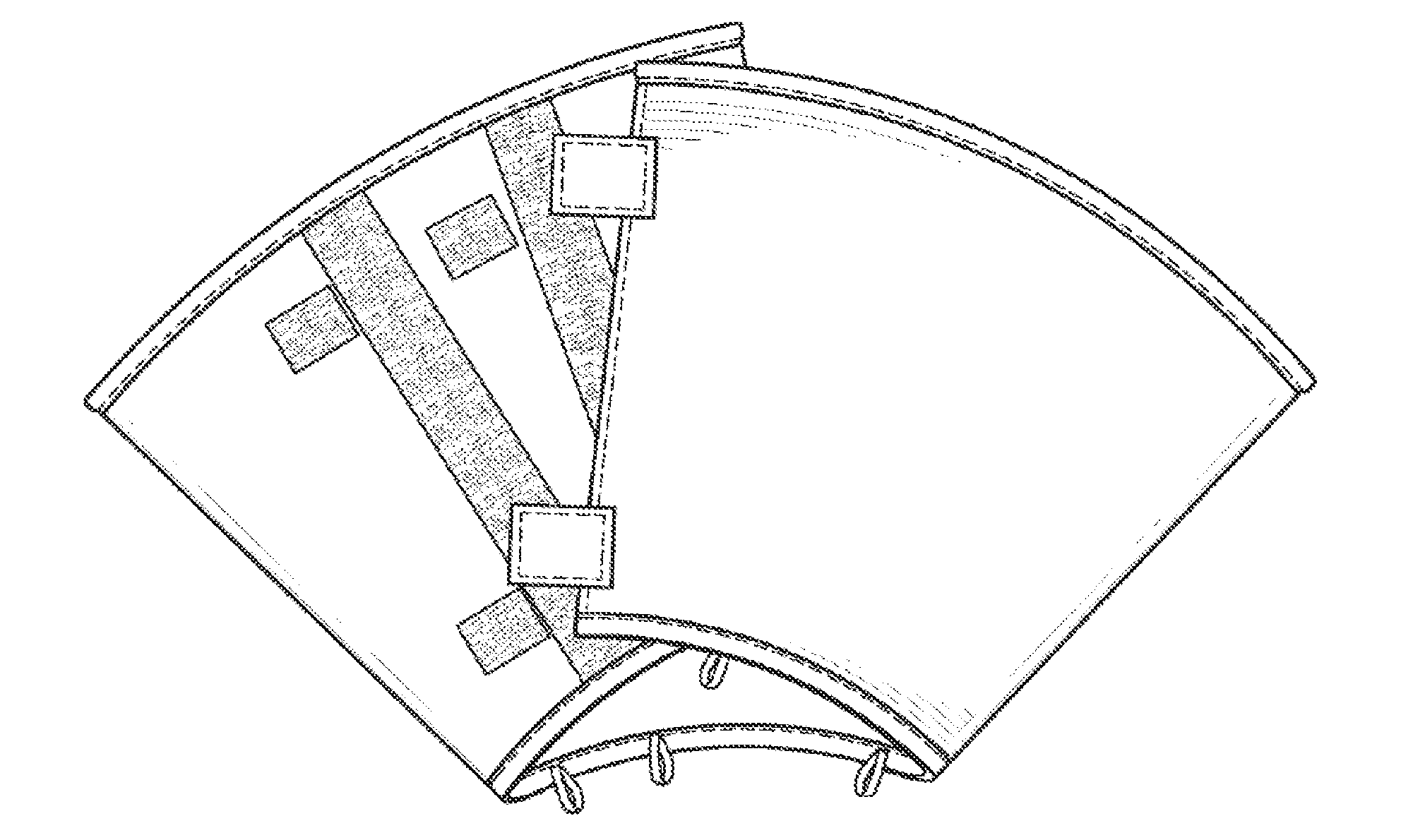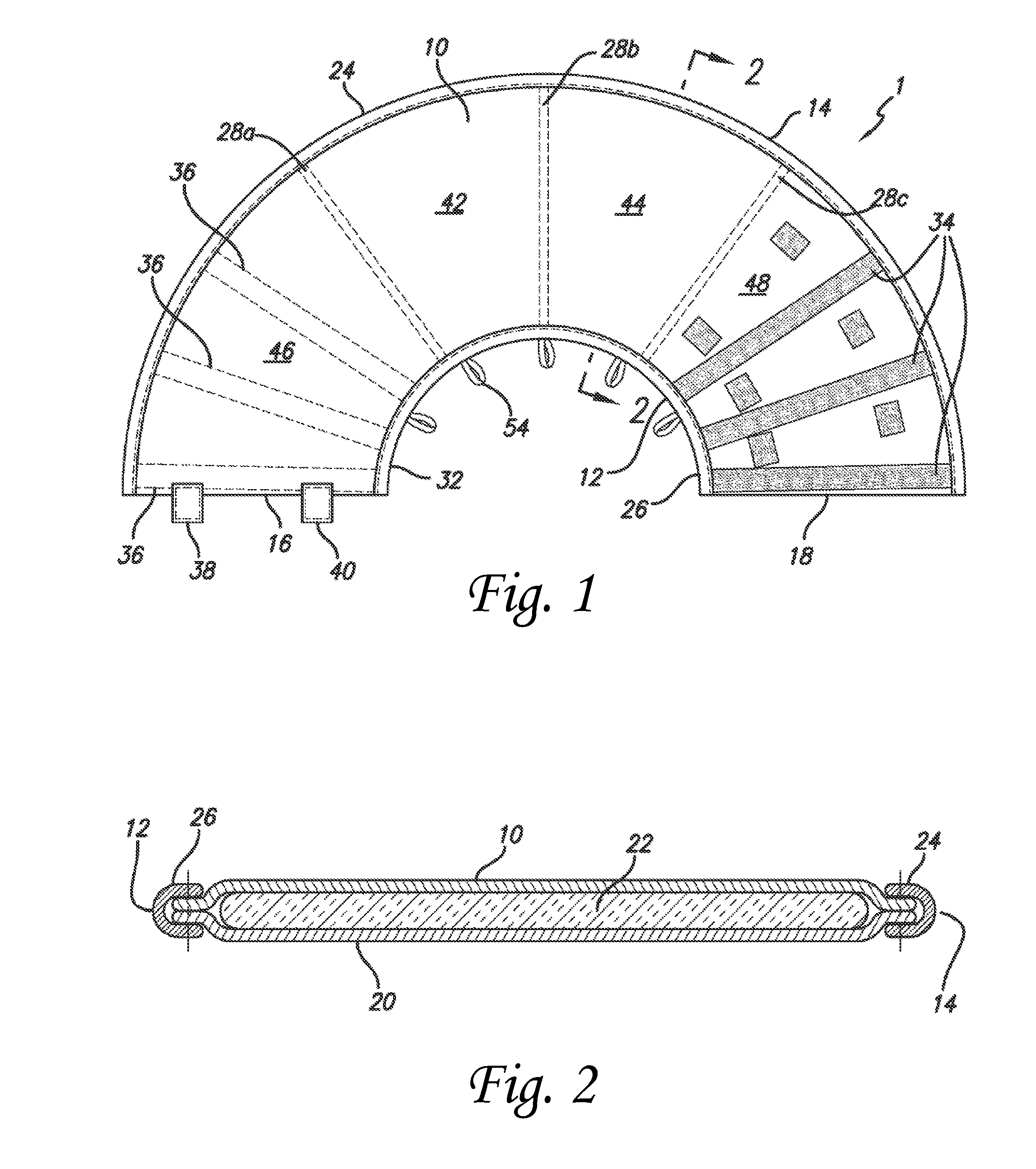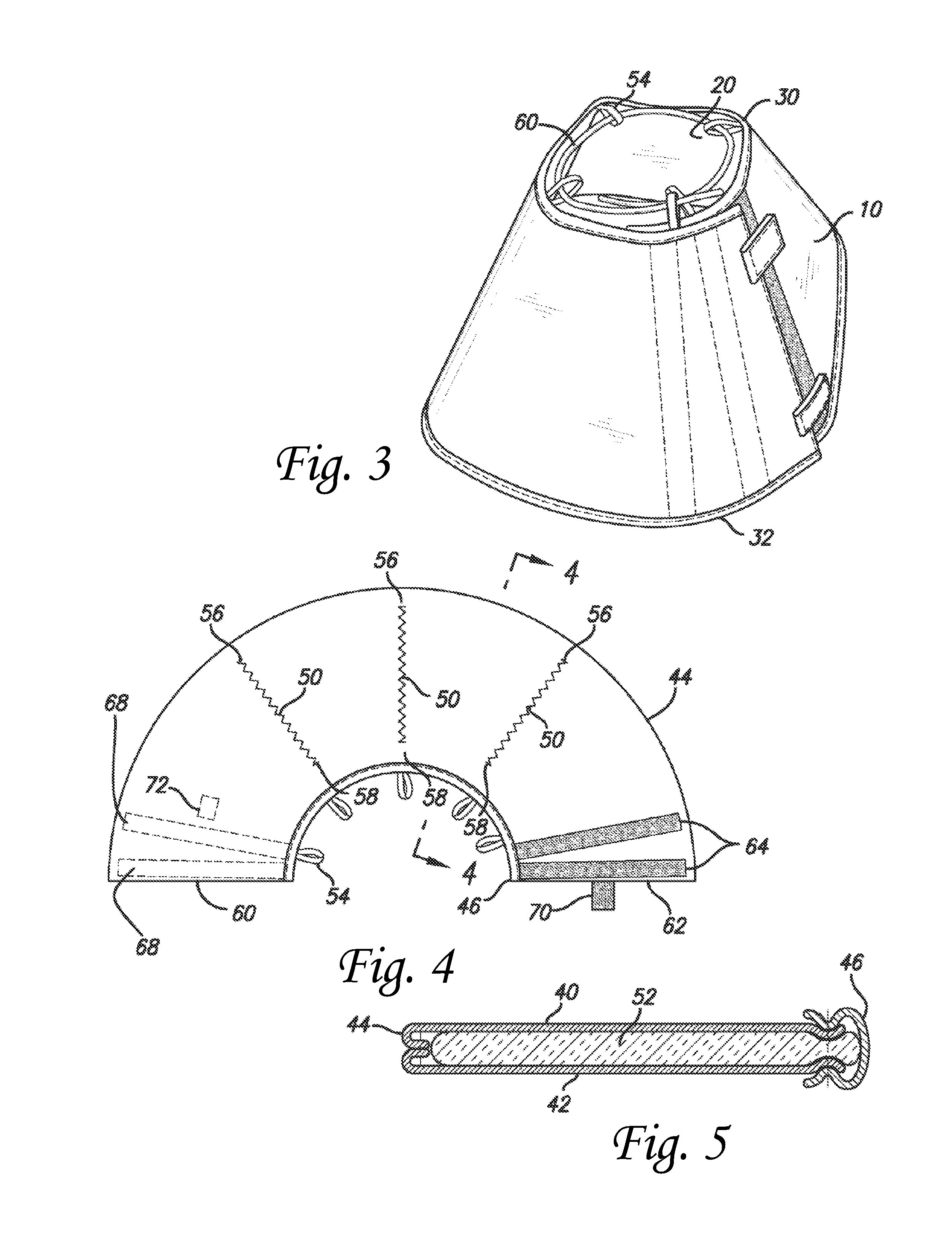Pet Protective Collar With Stays
a technology of ecollar and pet, applied in the field of flexible ecollar with stays, can solve the problems of slow healing, increased risk of infection, and disruption of licking, and achieve the effect of preventing unwanted escape of the stay
- Summary
- Abstract
- Description
- Claims
- Application Information
AI Technical Summary
Benefits of technology
Problems solved by technology
Method used
Image
Examples
Embodiment Construction
[0013](1) In a variant, a protective collar that is effective as a veterinary restraint when fitted on an animal, comprises a layered assembly comprising: a first sheet comprising a flexible substantially non-resilient material having inner and outer arcuate edges extending between a first end and a second end of the first sheet, the inner and outer arcuate edges comprising single circular arcs, wherein the outer arcuate edge has a substantially greater radius than the inner edge; a second sheet comprising a flexible substantially non-resilient material and having a substantially similar shape to that of the first sheet; a flexible resilient padding layer, forming a generally similar shape to the first and second sheets located between said first and second sheets, such that when assembled the first and second sheets and the padding layer form the layered assembly having an outer arcuate edge and an inner arcuate edge and a first end and a second end. At least one stay is connected ...
PUM
 Login to View More
Login to View More Abstract
Description
Claims
Application Information
 Login to View More
Login to View More - R&D
- Intellectual Property
- Life Sciences
- Materials
- Tech Scout
- Unparalleled Data Quality
- Higher Quality Content
- 60% Fewer Hallucinations
Browse by: Latest US Patents, China's latest patents, Technical Efficacy Thesaurus, Application Domain, Technology Topic, Popular Technical Reports.
© 2025 PatSnap. All rights reserved.Legal|Privacy policy|Modern Slavery Act Transparency Statement|Sitemap|About US| Contact US: help@patsnap.com



